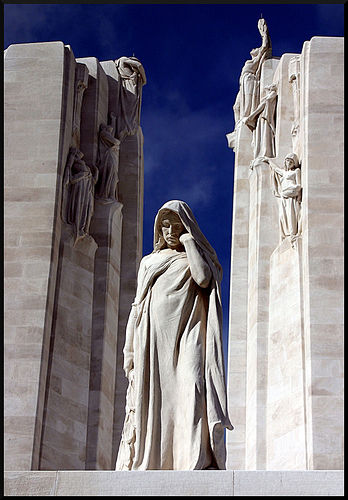John Dunlop Lambert
The Stratford-upon-Avon Boat Club was founded in August 1874, and by the years of the golden age before 1914, it had a flourishing Boat House by the Avon and a succession of winning crews. JOHN DUNLOP LAMBERT, always known as Jack, distinguished himself as a member of the crew that included Ted Berry, ‘Tiny’ Hands, Gil Fox and Frank Hitchman that won the Maiden Plate at the Ross Regatta in 1908. He became a well-known sporting personality in Stratford-upon-Avon, noted in the town for playing in both the rugby and cricket teams.
Born in August 1888, he lived in Henley Street, where his father sold fine china. John was a boarder in School House at King Edward VI School from January 1898 until July 1902, returning in January until July 1905. He was an enthusiastic rower at School and played for both the 1st XI and the 2nd XV.
He was employed in the office of Flower and Sons in Brewery Street, but clerical work was scarcely exciting enough for Jack, and so he accepted the Canadian Government’s emigration plan of 160 acres to farm in Alberta in 1910. The Stratford-upon-Avon Herald reported that ‘following a few years of strenuous work as a farmer, success began to crown his efforts.’ Coming home for Christmas 1913, he played ‘a brilliant game of rugby’ against Old Edwardians at Kings Heath. Before returning to Canada in April 1914, he was presented with a watch by his team-mates ‘as an earnest of the esteem and regard in which he was held.’
Whilst working for Flower’s, Lambert had served for three years in 8 Troop, D Squadron of the Warwickshire Imperial Yeomanry, and ‘His country’s call found him prepared to sacrifice personal interests for freedom’s cause,’ and so he enlisted in Edmonton, Alberta on September 3 1915. Following training he was promoted to Lance Corporal on January 1 1916 and to Corporal the following month. ‘Twenty- eight years of age, standing upwards of six feet, and weighing nearly fifteen stone, he was a magnificent specimen of English manhood,’ wrote the Stratford-upon-Avon Herald.
He embarked with his battalion on the SS Missanabie at Halifax, Nova Scotia, arriving at Liverpool on April 28 before moving on to Bramshott Common on the eastern side of Hampshire, ‘one of the largest training areas for Canadians in the UK.’ While there, he contracted rubella and spent nine days first in an isolation hospital in Bramshott, tended by Canadian nurses, and then in Aldershot Hospital.
After discharge on June 1, he transferred to 14 (Quebec) Battalion Canadian Infantry at Le Havre, from a training to a fighting unit. In the reorganisation he reverted to the rank of Private, although this did not reflect on him adversely in any way. He joined 14 Battalion on June 11 in a draft of 308 men in the field near Vlamertinghe that had been almost obliterated by German artillery.
The battalion had a relatively quiet introduction to trench warfare, although the weather was ‘foul’ with driving rain, but on June 25 the they suffered light casualties from a bombardment of gas and explosives. Most of July was spent in training and providing working parties, with a short, quiet period in the trenches.
In August the Battalion marched from the Ypres salient at Verbrandenmolen to St. Omer and the Second Army Training Area for an intensive programme of training and sport, and at the end of the month moved on to Vadencourt, about ten miles west of Albert, into ‘the Somme Salient trenches,’ where the Canadians were encamped on Tara Hill.
Following a very fine day, the Battalion War Diary records that on September 6, when orders were received to relieve another battalion in the trenches, the weather turned very wet with constant rain. One of the battalion companies was able to complete the relief by 2:30am on Thursday September 7 but with severe casualties, and the two remaining companies ran into serious trouble when the Germans launched an attack during the inevitably confused movements of a change-over in the narrow trenches. There were many more casualties under heavy artillery fire and all the guides were wounded. The significant reverse cost the Battalion one officer killed and five wounded. Forty four men were killed, 116 wounded and thirty three missing.
The Stratford-upon-Avon Herald reported that Jack Lambert was killed by a bursting shell while leading his men into the trenches. In an especially warm and personal tribute it recorded, ‘His unassuming manner and cheery disposition marked him from very birth as a type of that ‘happy breed of men’ of whom our immortal townsman wrote.’

Vimy Memorial, north-east of Arras
His body was never found, and he is commemorated on the Canadian National Vimy Memorial. It is Canada’s most impressive tribute to more than 66,000 Canadians who gave their lives in the First World War, including 11,285 with no known grave. It overlooks the broad fields and rolling hills of Northern France from the highest point of Vimy Ridge, about ten kilometres from Arras.
He is also commemorated on the Stratford-upon-Avon War Memorial, the Memorial Screen and Reredos in Holy Trinity Church, and the Stratford-upon- Avon Cemetery War Memorial. Down by the Avon there is a small memorial to those members of the Stratford Boat Club who died in the war, and in the Garden of Remembrance a plaque was dedicated in 2007 in memory of those members of the King Edward VI School Boat Club. John Lambert is further remembered in the Memorial Library of King Edward VI School.


